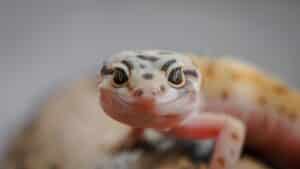We curated a guide for best lizards for pets.
Lizards have long captivated the human imagination with their ancient, otherworldly charm. For pet enthusiasts seeking a unique and fascinating companion, a lizard may be the perfect choice. But with hundreds of species to choose from, how do you select the ideal scaled friend? In this comprehensive guide, we’ll navigate the reptilian world, exploring some of the best lizards for pets, their care requirements, and what makes them lovable additions to any animal enthusiast’s home.
Understanding Lizard Companionship
Before diving into specific lizard species, it’s crucial to understand the commitment involved in keeping one as a pet .Make sure you go to a reputable breeder. Unlike traditional furry friends, lizards have distinct needs, and each species requires a unique approach to care.
Lizard companionship can be extremely rewarding, offering a window into their mesmerizing world. However, potential owners should be prepared for the longevity of their scaled cohabitants—lizards, in general, tend to live significantly longer than most small mammals.
Tailoring Lizard Choice to Your Lifestyle
No two lizards are the same, and choices must align with the prospective owner’s lifestyle, commitment, and living environment. Some lizards are more hands-on and interactive, while others prefer a more observational relationship. Size, temperament, and specific care requirements should all factor into the decision-making process.
Additionally, ensure that local regulations allow for the keeping of specific lizard species. Some lizards may require a permit or have strict restrictions on their ownership.

Popular Pet Lizard Species for Beginners
When venturing into lizard ownership, some species stand out as particularly beginner-friendly. These species are not only hearty and relatively easy to manage but can also provide fantastic opportunities for interaction.
The Bearded Dragon
Bearded dragons are arguably the most popular lizard pets due to their gentle demeanor and hardy nature. With their unique “beard” display and sociable personalities, bearded dragons make for excellent companions.
Bearded dragons thrive in warm, arid environments. Proper habitat temperature, UV lighting, and a balanced diet of insects and vegetation are essential for their health. Regular handling helps maintain their friendly disposition, transforming them into incredible, personable pets.
The Leopard Gecko
Leopard geckos are another top choice for novices. Their docile nature, small size, and fascinating nocturnal habits make them a hit with many reptile keepers.
Leopard geckos require a secure, moist environment with proper hiding places and a diet of insects. Ensuring their terrarium mimics their natural environment is key to keeping them content.
Crested Gecko and Beyond
Crested geckos have skyrocketed in popularity due to their low maintenance and unique crested heads, along with the African fat tailed gecko. They eschew insects in favor of a fruit-based diet, offering an alternative to common insectivorous lizards.

Advanced Lizard Keeping: High-Maintenance Species
For the more experienced reptile enthusiasts, certain lizards like blue tongued skinks offer a greater challenge and satisfaction. These high-maintenance species often have more specific environmental needs and require meticulous care.
The Chameleon Charisma
Chameleons are known for their unique ability to change color. They are suited for experienced keepers due to their complex needs, including specialized enclosure design and specific feeding and misting routines.
Proper hydration and humidity are critical for chameleons, and they feed predominantly on live insects. Their high perch and UVB requirements necessitate particular attention to their habitat.
Monitors and Tegus
Larger and more active, monitor lizards and tegus can make for remarkable pets in the hands of knowledgeable keepers. They require significantly larger enclosures and more varied diets, often including whole prey.

The Exotic Side of Lizards: Lesser-Known Choices
For those seeking the truly exotic, lesser-known lizard species offer unique characteristics and care requirements. These may not be as widely recognized, but they can be just as rewarding to keep as pets.
The Uromastyx’s Desert Majesty
Uromastyx lizards, also known as spiny-tailed lizards, are admired for their vibrant colors and desert-dwelling adaptations. They need exceptionally warm and dry enclosures to mimic their natural environment.
With a strict herbivorous diet and preference for high temperatures, uromastyx care can be demanding. However, their robust health and gorgeous looks make them a captivating choice for dedicated keepers.
Caring for a Plated Lizard
Plated lizards are well-armored with heavy spines and, as a result, are not typically handled as part of their care routine. Their omnivorous diet requires a mix of insects and plant matter, and they tend to be shy and reclusive.
The Commitment of Lizard Care
Caring for a lizard is a long-term commitment. From building and maintaining suitable enclosures to ensuring proper nutrition and veterinary care, each aspect requires thought and preparation.
Regular interaction and mental stimulation are critical for keeping a lizard happy and healthy. Incorporating enrichment activities like climbing structures, varied diets, and interactive feedings can enhance their quality of life.
Preparing Your Home for a Lizard
Creating the right environment for your lizard involves more than just setting up a terrarium. Considerations such as temperature gradients, UV lighting, and the need for a hiding place must be addressed to ensure your pet’s comfort.
Habitat Essentials
Every lizard species has specific habitat requirements. Elements such as substrate, basking spots, and moisture levels need to be tailored to mimic the lizard’s natural setting as closely as possible.
Kate’s K9 Pet Care offers pet supply delivery directly from pet stores. Never worry about your lizard running out of supplies.
![]()
The Veterinary Aspect of Lizard Ownership
Lizards are masters at hiding illnesses, making it essential to find a veterinarian who specializes in reptiles. Regular check-ups and vaccinations can prevent many common health issues.
Common Health Concerns
Respiratory infections, metabolic bone disease, and parasites are among the most frequent health issues in pet lizards. Understanding the early signs and keeping a watchful eye on your pet is crucial for prompt treatment.
Ethical and Legal Considerations
As with any pet, ethical and legal considerations should play a significant role in your decision-making. This includes understanding the laws around keeping lizards as pets and ensuring you obtain them from responsible sources that don’t contribute to the illegal wildlife trade.
Frequently Asked Questions (FAQs) About Keeping Lizards as Pets
Having a lizard as a pet may seem like a daunting task with a lot of upkeep, that’s why we are here to answer some FAQ about lizards as pets.
Do lizards need special lighting in captivity?
Yes, most lizards require special UVB lighting in their enclosures to help them synthesize vitamin D3, which is essential for calcium absorption and overall health.
How often do lizards need to be fed?
Feeding frequency depends on the type of lizard, its age, and health. Generally, young and growing lizards need to be fed more often than adults—typically once a day, compared to two to three times a week for adults.
What do lizards eat?
Lizard diets vary widely. Some are insectivores, others are herbivores, and some are omnivores. Ensure you understand the dietary needs of your specific species, which can include insects like crickets, vegetables, or pre-formulated reptile diets.
How Big Do Pet Lizards Get?
Lizard sizes range from a few inches to several feet in length once fully grown. Potential owners should research the expected adult size of the species they are interested in to ensure they can provide enough space.
Can I Keep More Than One Lizard in the Same Enclosure?
Some lizards are territorial and should not be housed together. Research to ensure if your chosen species is communal or solitary before considering housing more than one lizard together.
Do Lizards Interact With Their Owners?
While lizards might not seek interaction as mammals do, many can learn to recognize their owners and might show interest or comfort in their presence, especially during feeding times.
What Are Common Health Issues for Pet Lizards?
Common health issues include metabolic bone disease from calcium deficiency, respiratory infections, and parasitic infestations. A proper diet and clean habitat are crucial for prevention.
Remember that reptiles, including lizards, can carry Salmonella bacteria. It’s essential to practice good hygiene, such as washing your hands thoroughly after handling them or any objects within their habitat.
How Long Do Pet Lizards Live?
Lizard lifespans vary significantly by species. Some may live for only a few years, while others can live for over a decade. Proper care can greatly influence their longevity.

The Bottom Line on The Best Lizards For Pets
Deciding to keep a lizard as a pet is a significant step. It requires time, effort, and a genuine love for these unique creatures. By doing thorough research, understanding the commitment involved, and providing proper care, you can enjoy a fulfilling companionship with the best pet lizards.
Remember, each lizard is an individual. With patience and respect for their natural behaviors, you can forge a bond with your scaly friend that is as unique as they are. From your first hand-picked cricket to the seasoned expert’s perfected vivarium setup, the journey of lizard keeping is one of constant discovery and learning.
Whether you opt for a beginner’s companion like the bearded dragon or decide to take on the challenge of a chameleon, the world of lizards is an open book overflowing with varied characters waiting to join your life’s adventure. Embrace the scales, relish the reptilian, and enjoy the wondrous journey of lizard parenthood.






